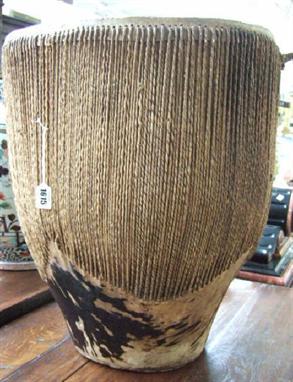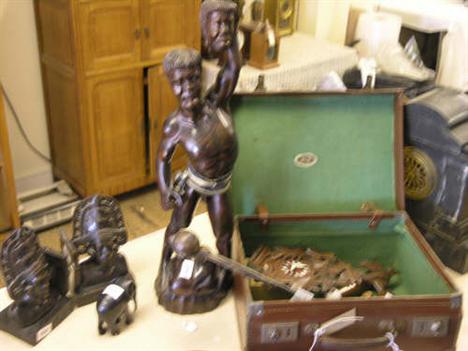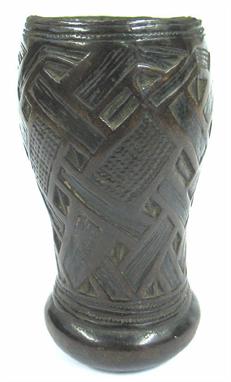We found 33312 price guide item(s) matching your search
There are 33312 lots that match your search criteria. Subscribe now to get instant access to the full price guide service.
Click here to subscribe- List
- Grid
Argyllshire Highlanders - South Africa An album of photographs belonging to David Dickson mostly relating to the 91st Highlanders in South Africa c.1879-1881, majority with ink captions, ink notes on front and rear fixed endpapers, album to include photographs of Durban, 3 images of 91st Highlanders in Natal [with keys listing subjects], 6 images of Cape Town and military camps, 14 images of tribal leaders in South Africa including Ceteweyo and his wives, panorama of Cape Town, Government House in Praetoria, Cape Fox Hounds meet July 1880, 2 images of Malta, 6 images of St Helena, 9 loosely inserted watercolours showing military camps, 91st Highlanders crossing drift, Highland gathering in Cape Town 1880 and a panorama of skating on Duddingston Loch December 1872, full morocco gilt, worn, inner hinges split; Harris, Robert South Africa. Port Elizabeth, 1888, mounted sepia photographs, water damage has caused a majority of pages to stick together, heavy staining, original black morocco, worn, upper board loose (2)
India, Ceylon, China, Australia, New Zealand An album of views, c. 1880, pasted to both sides of card leaves, including 7 prints of the Caves of Elephanta in Bombay by Clifton & Co, 7albumen views of Bombay, 2 views of Mount Alba, 6 smaller views of Jaipur [15x10.5cm high], 20 views of Delhi [various sizes], 4 views of the Taj Mahal, 2 albumen views of Benares from the Ganges by R.C. Mazumbar, 14 smaller albumen prints of Indian people [c. 6 x 10cm], 2 albumen views of Columbo, 3 albumen views of Ceylon, 3 prints of Cingalese girls, 3 albumen prints of Cingalese tribes, 8 silver gelatine views of Perth in Australia, 3 views of Townsville, Australia after the 1903 cyclone, 3 views of New Zealand including the White Terraces & Wanganui River, 5 prints of Maori tribal figures, 3 other Maori views including the hot springs at Whakarewarewa & a Maori House at Tampa, 7 prints of China including 3 of an execution of Namoda Pirates at Kowloon in 1891 and another showing death by strangulation in Canton; Burlington-Smith, J. 3 silver gelatine prints of Darjeeling, c. 23.5 x 29cm high, contemporary red morocco album, very clean and bright throughout
Hannes Harrs (1927-2006) Tribal Forms set of four colour prints on fabriano paper, in a signed folder, with three duplicate sets each signed, numbered and dated '83 50 x 35cm (sheet) (16); together with Armando Bandinelli,1979 calendar; Jeanette Dykman folder of prints, signed numbered ltd ed 500; Bronwen Mellor, four signed bird prints; Kim Donaldson, six signed bird prints from an edition of 250
A quantity of six Vintage Dolls to include: unmarked bisque head and shoulder Doll, cloth body and composition arms, in as found condition; Pin Cushion Half Doll; small composition Tribal Doll; unmarked bisque head Doll on felt body; small 19th Century Parian head and shoulder Doll on cloth body with Parian lower arms and legs, all requiring general restoration
Hong Kong, Khyber Pass, India, Himalayas, Europe An album of lossely inserted albumen prints, c. 1870's-80's, 123 prints all with ink captions, including two prints of Norway [20cm by 16cm high], five prints of Agra, 1881 [27cm by 20cm high at largest], two prints of Nice, 1879 [23cm by 18cm high], five prints of Monte Carlo, 1879 [27.5cm by 20cm at largest], five prints of Delhi, 1881 [18cm by 23cm high at largest], four prints of Bombay, 1880 [20cm by 16cm high], two prints of Lahore, 1881 [20cm by 16cm high], three prints of Paris after earthquake, 1872 [15cm by 9cm], two prints of Jaipur, 1881 [30cm by 18cm high], five prints of miltary activity at Peshawur, 1880-81 [21cm by 14cm high], seventeen prints in the Himalayas [including tribal groups], 1882 [20cm by 16cm high], six prints of Ahmedabad, 1880 [ 24.5cm by 19cm wide], five prints of the Khyber Pass & Afganistan, 1881 [28cm by 20cm high], two panoramic prints of Hong Kong harbour, 1882 [106cm by 20cm high; contemporary red cloth gilt ablum, rubbed; Russia, China An album of albumen prints, c.1880's - 90's, pasted onto leaves, including seven prints of Russia [22cm by 27cm high], 12 prints from a series "In and around Peking" with printed captions pasted alongside or over prints [23cm by 17cm high], four prints of groups in Chinese dress, captioned Fusan, dated 11th March 1893 [14cm by 10cm high], two panoramic Russian harbour views [no caption], [60cm by 16cm high], all pasted onto leaves in contemporary red morocco album, rubbed, some fading to edges of prints; Scrap Book Borradaile family scrap book, 1870-87, newspaper clippings, vellum (3) Provenance: Albums inscribed on the endpapers by various members of the Borradaile family; the first by H. Borradaile and the second by Alfred Alexander Borradaile, dated July 1884, with a portrait of A.A. Borradaile pasted to fixed endpaper.










































